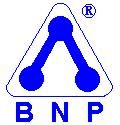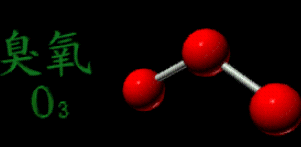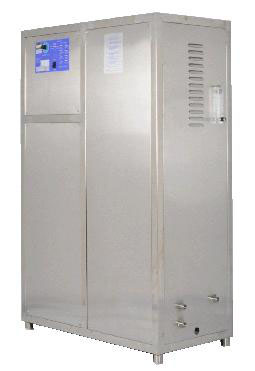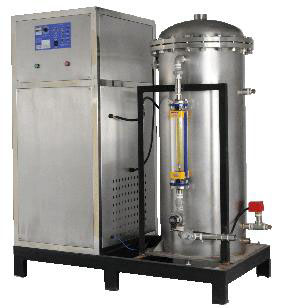|
|

Pure oxygen ozone generator water sterilizer disinfection
A Powerful Oxidant
Ozone is a very powerful oxidation agent. It is easily soluble in
water and its ability to eliminate the microorganisms that form
pollutants is very good. Once the problem is solved, the ozone
dissolves - our method forces the ozone to react with the pollutants
and break them down, after which any residual ozone returns to
oxygen.
The Chemistry of Ozone Formation
Ozone can be produced photochemically with UV light or with
electrical discharges (corona discharges) in an oxygen-filled
atmosphere. Thanks to our own patented technique, our equipment uses
the advantages of corona discharge to the maximum. Air or oxygen is
channelled between two electrodes and then subjected to electronic
discharges. The oxygen atoms are then partly atomized and form ozone
when free oxygen molecules react with the oxygen molecules present.
The electrons in the discharge supply energy to dissociate the atoms
in the oxygen molecule:
O2 + e- => O0 + O0
These free atoms react directly with each other or with oxygen
molecules to form ozone:
O2 + O0 => O3
Limit Values
Ozone is toxic to inhale. Ozone levels from 0.3 ppm irritate the
respiratory tract and the mucous membranes of the eye, while levels
around 100 ppm are dangerously toxic within a few minutes.
The Swedish National Board of Occupational Safety and Health has
drawn up hygienic limit values (acceptable average levels in inhaled
air) for ozone. Two main levels are used:
• Level limit value (LLV): Highest acceptable average content
in inhaled air during 8 hours
• Ceiling limit value (CLV): Highest acceptable average
content in inhaled air during 15 minutes
For ozone the threshold limit value is 0.1 ppm (0.2 mg/m3) and the
ceiling is 0.3 ppm (0.6 mg/m3) (AFS, 1996:2). According to the
Board, ozone is not carcinogenic or allergenic and does not impair
reproduction; nor is it easily absorbed by the skin
|


















